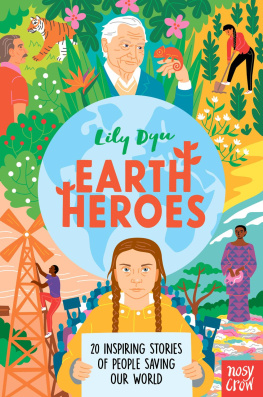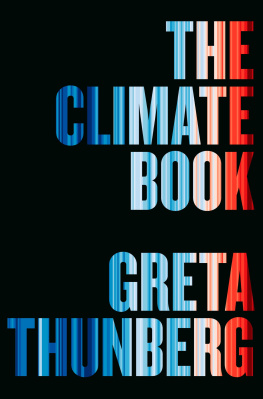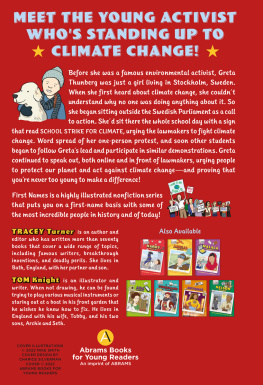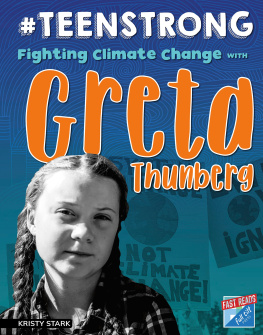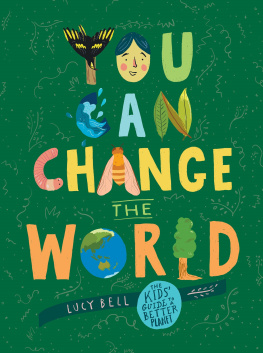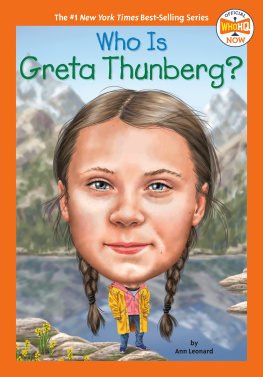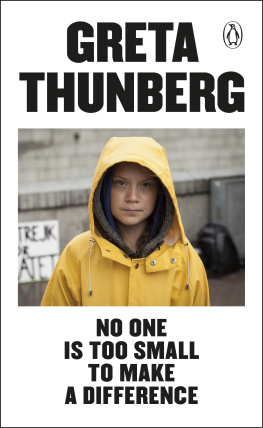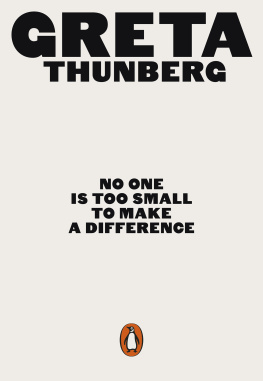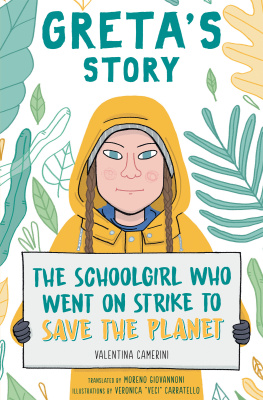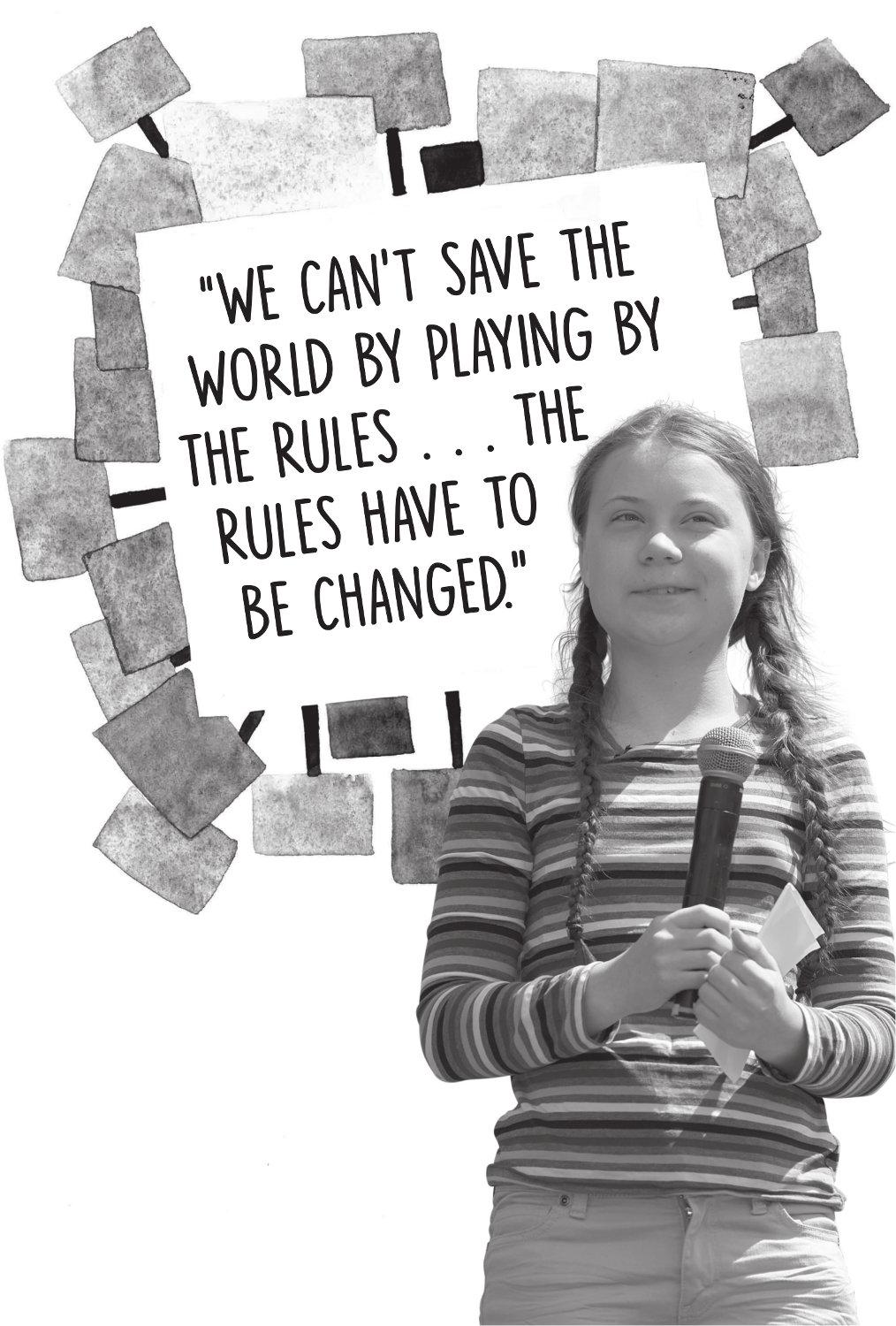L.D.
J.L.
INTRODUCTION
THE FUTURE
IS IN
OUR HANDS
Half a century ago, humans stood on the moon for the first time. Perhaps the most important image from the moon missions wasnt of astronaut Neil Armstrong taking his first step onto the grey lunar desert, but actually one taken a few months earlier, on Christmas Eve, 1968. It was then that the Apollo 8 mission sent the first manned spacecraft to orbit the moon. The team were searching for future lunar landing sites, and one of the astronauts took a photo as our planet appeared over the moons horizon. This picture became known as Earthrise. It shows the dull, lifeless surface of the moon and behind it our beautiful blue planet, alone in the blackness of space. The astronauts remember it as being the most breathtaking sight, filling them with love and longing. It was the only thing in space that had any colour, and it struck them that theyd come almost a quarter of a million miles to photograph the moon, but it was the Earth that was really worth looking at.
I grew up with dreams of looking upon the Earth from space. As a teenager, I wanted to be an astronaut and, instead of pictures of my favourite bands, my room had a poster of a NASA astronaut floating above the Earth. Winter evenings were spent stargazing from the garden, picking out my favourite constellations. I wasnt really an outdoorsy child, and I only discovered nature in my twenties when I took up running. Muddy trails led me to forests, rivers, mountains and clifftops, with their rich abundance of life. I fell in love with the natural world; it was where I felt most at home and running in the wild filled me with an intense connection to the living environment around me.
I have learned that astronauts, too, feel a deep connection with all life on Earth once they see our planet from space. Below them is a world without borders a miraculous swirl of land, ocean and clouds. They realise that humans are just one species alongside other creatures on Earth and are shocked to see our planets fragility and vulnerability. Our atmosphere, nurturing all life, looks like a paper-thin shell. It is the only thing protecting us from deadly cosmic radiation and the hostile environment of space, and the only thing preventing us from becoming like other lifeless planets in the solar system.
Humans have created an environmental emergency here on Earth, dangerously warming our atmosphere. Climate change is the biggest threat humankind has ever confronted. And we have already destroyed so much of our astonishing natural world. We need to act now so we can continue to share our one home planet with each other and all life. Scientists say it is achievable, but we are running out of time. In October 2018, the United Nations Intergovernmental Panel on Climate Change issued a special report saying that we have 12 years to limit warming to 1.5 degrees Celsius. It argues that if temperatures rise beyond this, many of the negative effects of climate change will be irreversible. Our beautiful world will be changed forever.
Faced with such a shocking statement, its easy to think that theres nothing we can do. News headlines often focus on negative stories, so we rarely hear about any of the good things that are happening. But there are in fact countless people doing amazing things to protect our planet and conserve nature. These are ordinary people, most of whom arent looking for the spotlight, and in this book you will meet Earth Heroes that you have heard of and many more you have not, whose stories show that we can all make a difference.
From Chewang Norphel, the engineer building artificial glaciers in Ladakh, to Doug Smith, the biologist returning wolves to America, and from Stella McCartney, the designer creating sustainable fashion, to Melati and Isabel Wijsen, the schoolgirls saving Bali from plastic pollution, these Earth Heroes show that one person, no matter how small, really can change the world. And if nations can work together to put people into space, then imagine what we could achieve together for Planet Earth if only we tried.
As conservationist and tiger defender Bittu Sahgal tells people who ask how they can help protect nature, Be who you are and do what you do best.
Everyone matters. The future is in our hands.
Lily Dyu
September 2019
GRETA
THUNBERG
THE SCHOOLGIRL
WHO SPARKED
A REVOLUTION
The forest was burning. Enormous orange flames curled around tree trunks and climbed into the canopy. The heat was intense and smoke filled the air. A hundred volunteer fire fighters students, teachers and holiday-makers had come from Jokkmokk, the nearest town, to help. As Greta watched the drama unfold on her television screen, they pointed hosepipes at blazing trees and blackened stumps. Above the crackle of flames and thud of falling branches, she could hear the thrum of a helicopter overhead, as its pilot desperately dropped water bombs to douse the flames.
It was July 2018. It had been a freakishly hot summer in Sweden, with a drought and the highest temperatures recorded in over 260 years. Wildfires had raged uncontrollably through the countrys forests. Jokkmokk is famous for its winter market, but even this area of Lapland at the Arctic Circle had not escaped the fires, the largest of which tore through an area the size of 900 football pitches. In Gretas home city, Stockholm, it had been the hottest summer since records began, with many days exceeding 30 degrees Celsius.
A month later, Greta sat at her kitchen table making preparations. She thought about the key facts people should know about global warming and, choosing her words carefully, neatly wrote out a stack of flyers. Then on a board she painted the words School Strike for Climate. Her parents tried to dissuade her, but the next morning, instead of heading off to school, she stuffed the flyers and some schoolbooks into her rucksack, jumped on to her bike and pedalled to the Swedish parliament building. She sat down outside, propping her sign up against the wall. People hurried by on their way to work, clutching briefcases and sipping from coffee cups. But if they noticed the slight girl with long brown pigtails, they didnt stop to find out more.
Greta was skipping school to protest about climate change. All summer, she had followed news of Swedens wildfires and the heatwave that had killed hundreds of people across Europe. In 2015, Sweden had been one of 197 countries that signed the Paris Climate Agreement; each country had agreed to reduce their greenhouse emissions so that the rise in global temperature could be limited to less than two degrees Celsius, but little had changed since that time. Without action, children like her would grow up in a world dangerously affected by climate change, and yet nobody seemed to be doing anything about it. She had no choice but to act. Greta would strike from school until Parliament made the urgent changes to laws needed to meet the Paris targets.
This moment of protest didnt appear from nowhere. Greta had been building up to it for the last seven years. She lives in Swedens capital city, along with her younger sister. Her mother is an opera singer and her father, an actor, stays at home to look after his daughters. Growing up, Greta learned piano and ballet, and loved being outdoors horse riding and walking the familys dogs. Before her climate strike, she had just been a normal schoolgirl, if a little quiet and shy the girl at the back of the class who was afraid to speak up.

